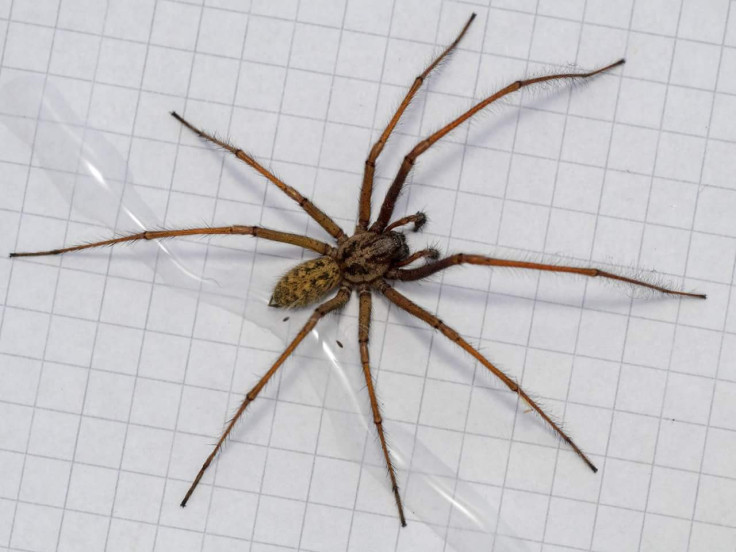If you see giant horny spiders crawling your house, it's a good thing – here's why
There's some truth to the 'giant horny house spider' headlines, but don't be scared.

It's the season for headlines about 'giant horny house spiders'. Be afraid, giant spiders. And they're horny! And they're running around your house! Here to calm you down, IBTimes UK went looking for positive facts about our eight-legged friends.
"There will be some spiders around," Sara Goodacre, associate professor in the school of life sciences at Nottingham University and head of the university's spider lab told us. "It's September and it's autumn and spiders get big this time of year, that's true, and we live in houses, that's true, and spiders come in occasionally, that's true."
But it's not something to be worried about, Goodacre says, if anything, we should be happy to see them: "spiders are brilliant. They're great pest controllers, if you have a few spiders in your house they'll eat the pests that you don't want, completely for free! They're hygienic, house spider silk is even anti-bacterial, that's something my lab showed."
Goodacre says that the way we treat spider phobias is odd: "If you can imagine a scenario where there was something in our homes that made some people afraid to go into a room in their house – the bathroom or the kitchen... we would actually do something about it but because it's spiders people kind of accept the fact 'oh, I'm scared' and it's life-limiting."
"I think it's really irresponsible then that people continue to put out scare stories that mean someone has a bad day somewhere unnecessarily." Goodacre points at the 'false widow hype', when spiders that look like the deadly black widow spider were seen around the UK – in truth, it was a non-story, false widows (steatoda) are not dangerous to humans. After reviewing the literature around them, Goodacre found one incident of a false widow biting a man in Worthing in 1991, the result was a "slightly sore arm".
What's worse is that the stories go on to affect children and pass on baseless fears. Goodacre takes tarantulas into schools and often finds the kids are not scared at all while it's the adults who are looking nervous.
"The bottom line is: it's harmless."
The truth about the giant horny house spiders is that eratigena atrica (a recent name given to the species thought to comprise different varieties of European house spider) matures around September and starts looking for mates – they're more likely to take a wander to find a spider partner – but preferring damper conditions, they're still more likely to scuttle across your garage than your living room floor.
"It is quite big and it runs quite quickly so people tend to get alarmed by it," says Goodacre, but adds that "the bottom line is: it's harmless."
According to Christopher Carter from the Kent-based Invicta Arachnid Club, this year's spiders will be a bit larger. Though the males can usually attain a leg-span of 50mm, a mild winter has meant the spiderlings had a few months of extra food – meaning they will be larger than normal, "up to 100mm leg-span" says Carter.
So according to experts, is it a good thing to see a giant horny house spider? "It's a great thing. There's nothing bad that they can do." says Goodacre. They also serve an important function as nutritious food for birds, giving them nutrients other herbivorous critters wouldn't. "They fulfill this amazing, wonderful function and they eat stuff that you don't want: mosquitoes, any small insect a spider will go for. They don't even ask for a thank you."
© Copyright IBTimes 2025. All rights reserved.




















